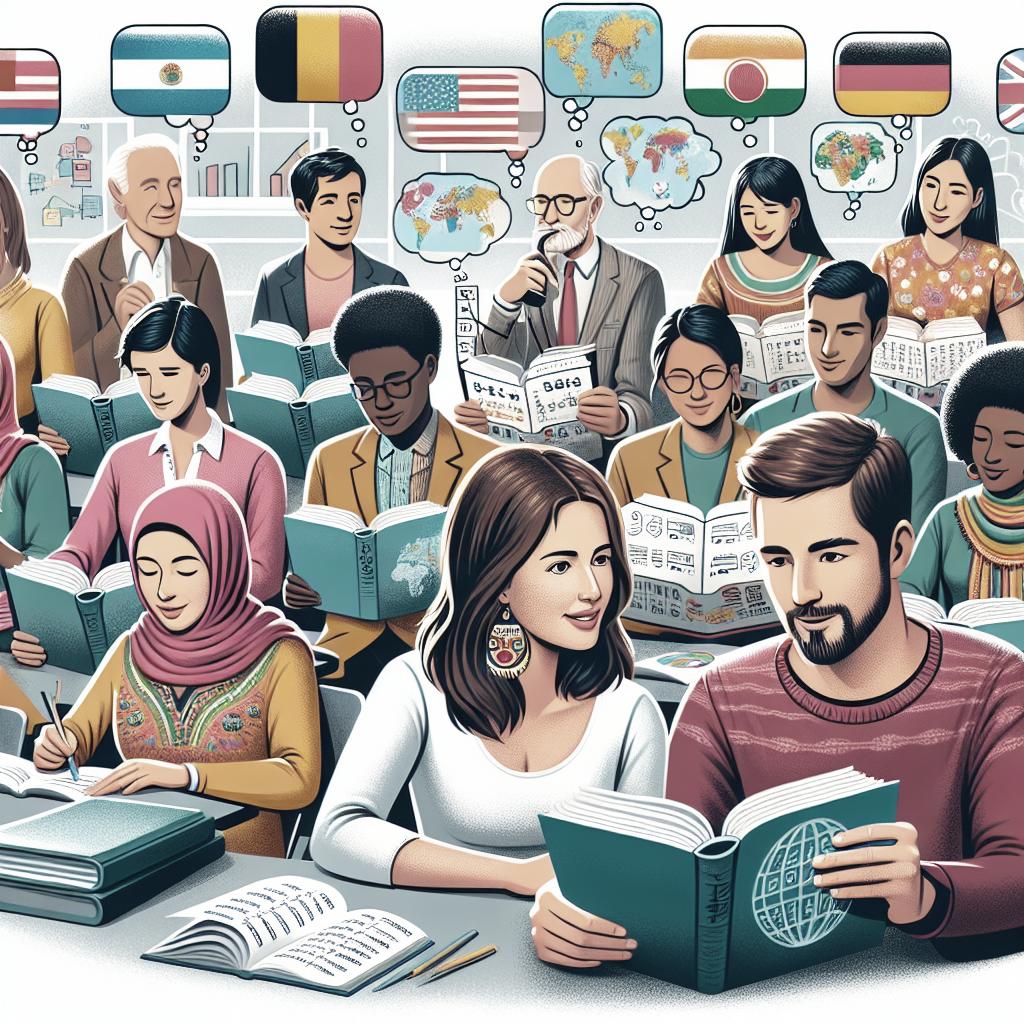<>
Language immersion programs have gained popularity around the world due to their ability to enhance language learning through immersive experiences. These programs don’t just teach a new language; they enable participants to live the language, gaining proficiency through real-world use. This blog post explores the multifaceted benefits of language immersion programs. We will delve into two-way language learning, focus on heritage language learners with insights into Spanish and Hmong, and discuss how business professionals can sharpen their English language skills using tools like Linguaskill. By doing so, we will paint a comprehensive picture of how language immersion can be a transformative experience for learners of all ages and backgrounds.
Two-Way Language Learning
Two-way language learning, also known as dual-language immersion, offers a rich environment where both speakers of a target language and native speakers of the local language engage in learning each other’s languages. This symbiotic model promotes bilingualism, biliteracy, enhanced academic achievement, and heightened cultural awareness. For instance, in a dual-language classroom, English-speaking students might learn Spanish alongside Spanish-speaking classmates who are simultaneously learning English. This creates an environment where students are consistently using their target language in practical scenarios, reinforcing their learning through natural use. The immersion setting helps to bridge cultural gaps, making students more empathetic and understanding of different cultural perspectives. Moreover, two-way language learning fosters an inclusive learning environment. It values the linguistic and cultural backgrounds of all students, going beyond mere academic learning to build a community of diversified cultural appreciation. This not only enriches students’ educational experience but also prepares them for a globalized world where multicultural competence is increasingly important.
Heritage Language Learners: Spanish
For heritage language learners, language immersion programs offer an invaluable opportunity to reconnect with their cultural roots while mastering their ancestral language. Spanish, being one of the most widely spoken languages in the world, holds significant cultural and economic importance. Heritage language learners of Spanish often experience a deepened cultural connection and an enhanced sense of identity through these programs. These programs typically focus on practical usage and cultural immersion, providing students with the chance to use Spanish in everyday contexts. Activities might include conversations with native speakers, participation in cultural events, and exploration of literature and media in Spanish. Such exposure helps learners to move beyond textbook learning, making the language come alive in a meaningful way. Additionally, Spanish language immersion can also offer practical benefits. Being bilingual in Spanish and English opens up myriad career opportunities in industries such as healthcare, education, business, and diplomacy. It enhances communication skills and increases employability, giving heritage language learners a competitive edge in the global job market.
Heritage Language Learners: Hmong
Hmong language immersion programs serve as vital resources for heritage learners seeking to preserve their linguistic and cultural heritage. The Hmong language, spoken by the Hmong people from regions including China, Vietnam, Laos, and Thailand, carries with it rich traditions and histories. For heritage learners, immersion programs are a gateway to reconnect with these traditions and ensure the survival of their language. These programs often provide a blend of language instruction and cultural education, engaging learners in activities that promote both linguistic skills and cultural appreciation. Students might learn traditional Hmong songs, participate in cooking traditional dishes, or study the history and folklore of the Hmong people. This holistic approach not only enhances language proficiency but also fosters pride and connection to one’s heritage. Moreover, Hmong language immersion can play a critical role in community building. As speakers of Hmong are often spread across diasporic communities, immersion programs bring together learners and native speakers, creating a support network that strengthens community ties. This communal learning environment helps mitigate the risk of language loss and ensures that the Hmong language and culture continue to thrive across generations.
Real Life English Language Skills for Business – How Linguaskill Can Help
For business professionals, English proficiency is a vital asset in the global market. Language immersion can provide significant advantages, but tools like Linguaskill by Cambridge Assessment English offer additional support to hone specific business language skills. Linguaskill is an online test that helps organizations assess the English language skills of their employees accurately and efficiently. Linguaskill focuses on real-life communication skills that are essential for professional settings. The test evaluates reading, writing, listening, and speaking abilities, providing detailed results that highlight strengths and areas for improvement. This targeted feedback allows learners to focus on their specific language needs, enhancing their ability to communicate effectively in business environments. The flexibility of Linguaskill makes it an ideal complement to immersion programs. Professionals can take the test at their convenience, and the results can guide personalized training programs that address individual language challenges. By integrating Linguaskill with language immersion experiences, business professionals can achieve comprehensive language proficiency that meets the demands of the global workplace. Summary of main points
| Aspect | Details |
|---|---|
| Two-Way Language Learning | Promotes bilingualism, cultural awareness, and inclusive learning. |
| Heritage Language Learners: Spanish | Fosters cultural connection, practical use of language, and career opportunities. |
| Heritage Language Learners: Hmong | Preserves linguistic and cultural heritage, and strengthens community ties. |
| Real Life English Language Skills for Business – How Linguaskill Can Help | Provides targeted assessment and training for professional communication skills. |


